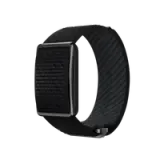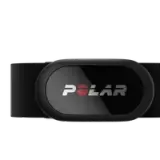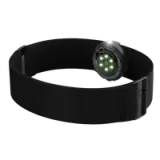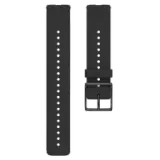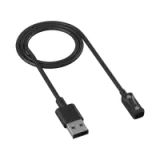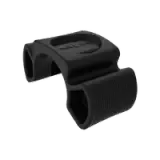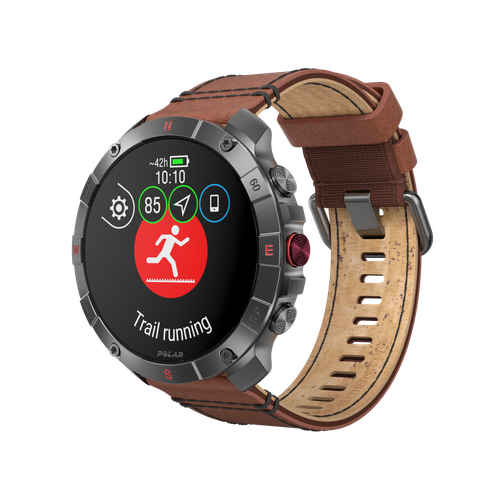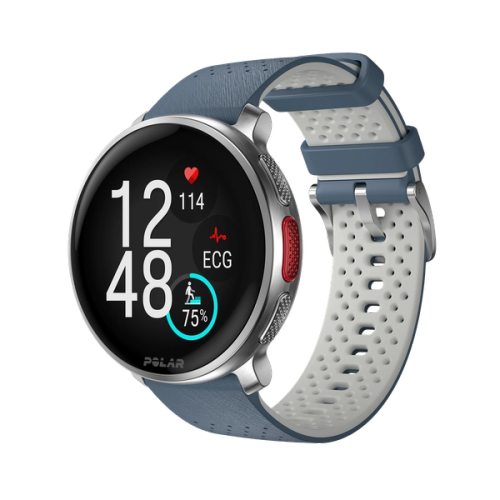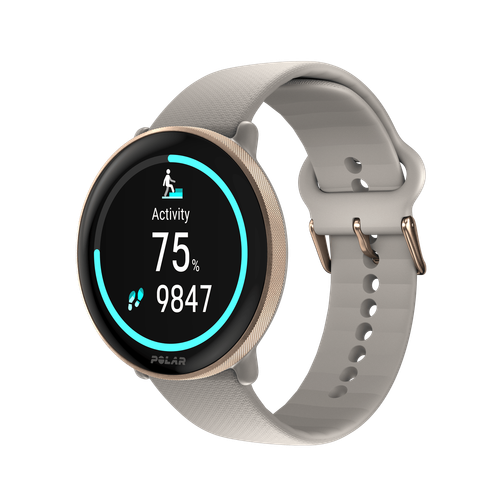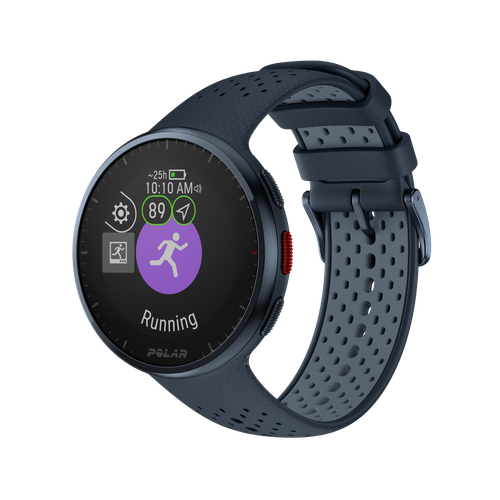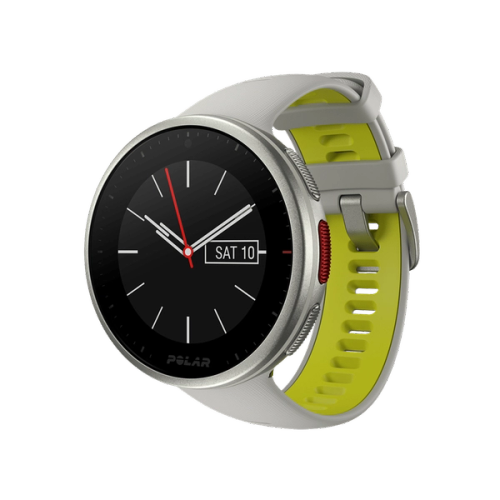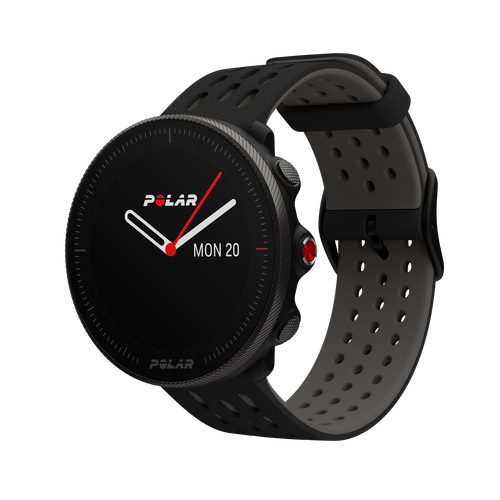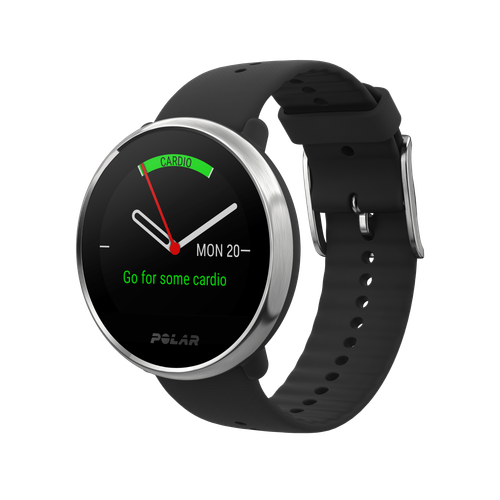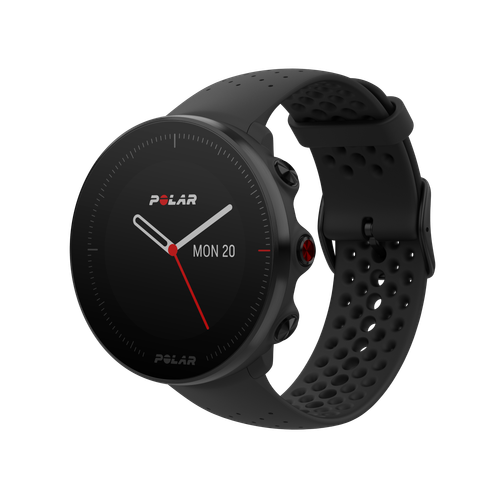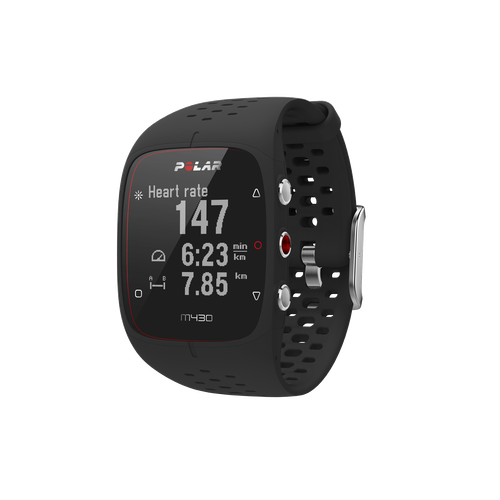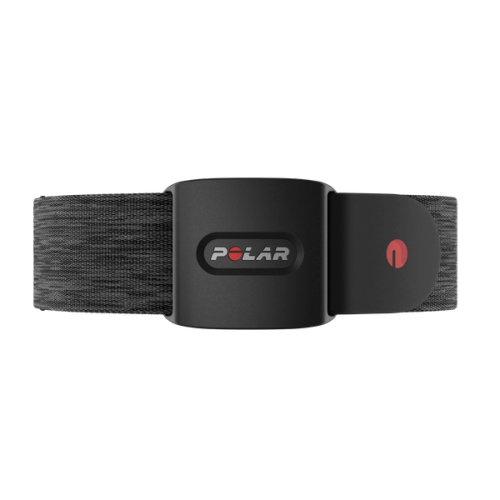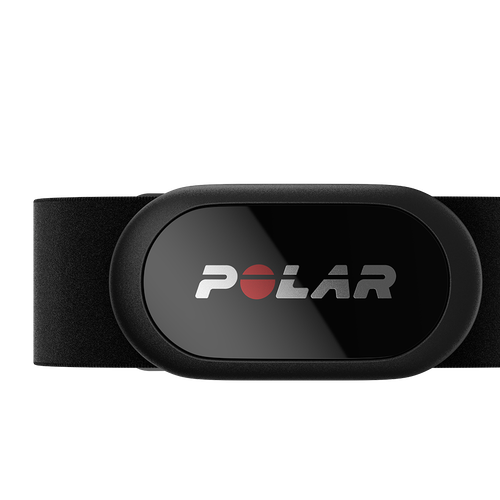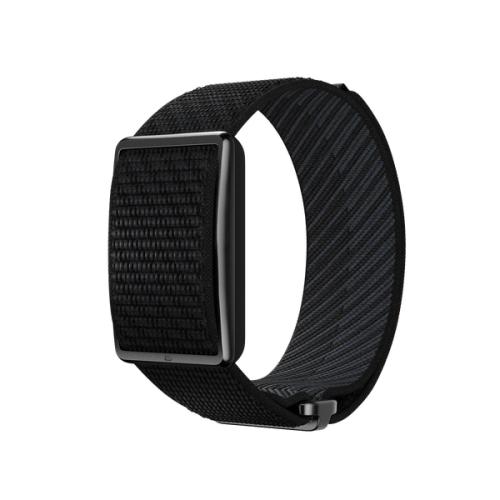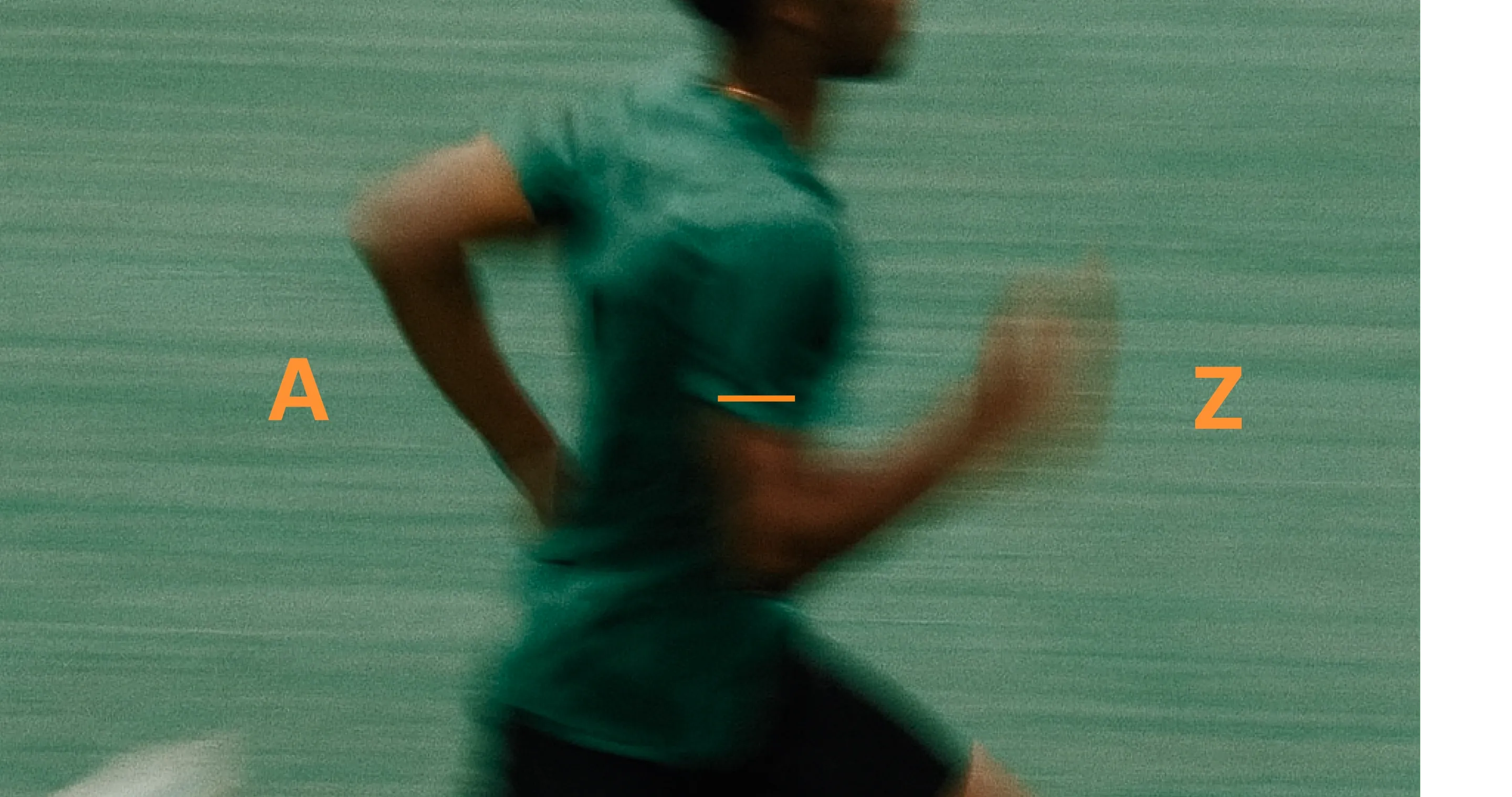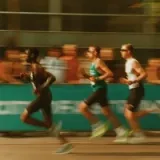You’ve finally committed to that new gym membership or training plan, but now you’re standing there utterly confused. Your PT just told you to hit the HIIT and then focus on some reps to increase your hypertrophy. And now your brain's buffering, trying to process this alphabet soup of gym terms and workout jargon.
You'll be pleased to know that no one is born with a pre-installed understanding of all these workout terms. We all had to learn them too, and it turns out there’s more to lifting than just, well, lifting. The fitness world is full of complicated vocabulary and weird acronyms that can make it feel like you’re trying to read a programming manual written in another language.
So, fear not, future fitness nerd! This fitness glossary will demystify all those confusing workout terms so you can speak fluent 'swole' (that's slang for super muscular) in no time. Get ready to level up your fitness IQ.
Types of Exercise, Events & Equipment
5k: A common abbreviation for a five-kilometer race, which is about 3.1 miles.
10k: A 10-kilometer running race, approximately 6.2 miles. Crush your next 10k with our 10k training plans.
Bikepacking: The combination of all-terrain cycling and backpacking. It involves carrying essential gear on an off-road-capable bike for an overnight or multi-day trip. More on bikepacking.
Bodyweight training: Exercises that use a person's own body weight for resistance, such as push-ups, squats, and sit-ups.
Calisthenics: Exercises that use a person's own body weight to improve strength, flexibility, and coordination.
Cardio: An abbreviation for cardiovascular exercise, which raises your heart rate and breathing rate to improve the health of your heart, lungs, and circulatory system.
Circuit Training: A series of exercises performed one after the other with little or no rest in between.
Cross-training: Engaging in other forms of exercise besides your primary form of training or sport to improve overall fitness and reduce the risk of injury.
Half marathon: A running race that is half the distance of a full marathon, approximately 13.1 miles. Here's a half marathon training plan.
High-intensity interval training (HIIT): A training method that alternates between short bursts of intense exercise and periods of less intense activity or rest.
Isometrics: A type of strength training where a muscle is contracted without any visible movement in the joint, such as holding a plank or pressing your hands together.
Marathon: A long-distance running race with an official distance of 42.195 kilometers (26 miles and 385 yards). For all things marathon, check out this special edition of Polar Journal: The Marathon Issue.
Multisport challenge: A competition that involves multiple sports, such as biking, running, and kayaking.
Nordic Walking: A type of walking that uses specially designed poles to engage the upper body and increase the intensity of the workout. More: Explore the world with Nordic walking.
Pilates: A system of exercises that focuses on strengthening the core, improving flexibility, and increasing body awareness through controlled movements.
Plyometrics: Exercises that involve explosive movements to build power and strength, such as box jumps or squat jumps.
Racket sports (or racquet sports): Games where players use a racket or paddle to hit a ball or other object. Includes tennis, badminton, pickleball, padel and squash.
Rucking: Walking with a weighted backpack or vest.
Running poles: Handheld poles used to assist runners, especially on trails with difficult terrain. They help with balance and propulsion, and can reduce stress on the body.
Sport climbing: A style of climbing where permanent anchors are pre-installed on the rock. Different from traditional climbing, which requires a climber to place their own protection.
Strength training: A type of exercise that focuses on increasing muscle mass and strength. It's often done with weights, but can also be done with bodyweight. Get started with the Polar Guide to Strength Training.
Technical terrain: Trails or paths with challenging surfaces such as rocks, roots, or uneven ground.
Thru-hikers: People who hike a long-distance trail from start to finish in a continuous journey.
Ultra-endurance/ultrarunning: Events that are longer than a traditional marathon (26.2 miles), often over extreme distances that can last for days. Yes, we also had a Polar Journal edition dedicated to ultrarunning.
Yoga: A practice that combines physical postures, breathing techniques, and meditation to promote physical and mental wellbeing.
Training & Performance
80-20 rule: A training principle where 80% of your running should be at a low intensity (easy miles) and 20% should be at a moderate to high intensity (speed workouts, tempo runs).
Aerobic intensity: A lower, more sustainable level of exercise.
Aerobic capacity/Aerobic efficiency: The body's ability to efficiently use oxygen to produce energy for sustained exercise.
Anaerobic threshold: The point during exercise at which a person's body begins to rely more heavily on anaerobic metabolism.
Base (as in 'base training' or 'base building'): A phase of training focused on consistent, low-intensity running to build a strong aerobic foundation.
Blocks (as in 'training in blocks'): A structured approach to training where an athlete organizes their workouts into a multi-week cycle, often with a period of high intensity followed by an easier recovery week.
Bonk (or 'hitting the wall'): Severe or sudden fatigue, usually caused by a lack of calories or depleted glycogen stores.
Cadence: An aspect of running form, referring to the number of steps you take per minute.
Cumulative volume and running frequency: Metrics that focus on the total amount of running done over a period (volume) and how often you run (frequency), rather than just the length of individual runs.
Cycle syncing: The practice of adjusting a fitness routine to align with the different phases of a person's menstrual cycle to optimize training and recovery. Learn more about cycle syncing.
Double poling: A Nordic walking technique where both poles are planted in front of the body at the same time to propel the walker forward.
Dryland training: In swimming, this refers to exercises performed out of the water, such as squats and push-ups, to build strength and power that can improve performance in the pool.
Dynamic drills: A series of movements, such as high knees, butt kicks, and leg swings, performed as part of a warm-up to prepare the muscles for a workout.
Endurance capacity: The ability to sustain a prolonged physical effort.
Endurance training: Exercises that focus on increasing the body's ability to sustain physical activity over an extended period.
Explosive bursts: Short, powerful movements that require a high amount of force in a very short period of time.
External load: An objective and quantifiable measure of the body's response to physical work performed by an athlete. Metrics include weights lifted, distance, speed, power and velocity.
Fartleks: Swedish for "speed play," this is a less structured type of speed work where you vary your pace and intensity based on how you feel or the terrain.
Fastest known times (FKTs): The fastest time a person has completed a specific route, usually a hiking or running trail, that is not an official race course.
Hill repeats: A workout that involves running up a steep incline multiple times, which helps strengthen legs, boost endurance, and improve form for tackling tough terrain.
Internal load: A measure of the body's response (e.g., heart rate, perceived exertion) to physical work performed by an athlete.
Interval training (also known as Intervals): A specific type of speed work that involves alternating between periods of high-intensity running and rest or low-intensity running. Here are a few tips to get started with interval training.
Inversions: A term used in yoga to describe poses where the head is below the heart, such as a headstand or handstand.
Lactate Threshold Training: A training method focused on improving the body's ability to clear lactate from the muscles, which allows an athlete to sustain a higher intensity for longer. More: everything you need to know about lactate threshold.
Long runs: A key component of a runner's training plan that involves covering a long distance at a steady pace to build endurance.
Long Slow Distance (LSD): A training method that involves running for a long duration at a slow, conversational pace. So, what are LSD runs?
Lower body workout: A training session that focuses on exercising the muscles in the lower part of your body, such as your glutes, quadriceps, hamstrings, and calves.
Macrocycles: These are the big-picture phases of a training year, such as the preparation, competition, and transition phases.
Mesocycles: These are the smaller breakdowns of a macrocycle, often a few weeks or a month, that focus on developing a specific fitness attribute like speed or endurance.
Norwegian method: A training approach primarily used in endurance sports, such as running and cross-country skiing, that involves a high volume of training performed at a relatively low intensity.
Off-season training: A period of lower training intensity, typically between major sports seasons or events, to allow for complete recuperation.
Overtraining: A condition caused by exercising too much without enough rest, which can lead to fatigue, injury, and a decline in performance.
Pacing: Maintaining a consistent speed or effort level during a race or training session to manage energy and avoid premature fatigue.
PB (Personal Best) or PR (Personal Record): An abbreviation for an individual's best performance in a workout or race, usually in time format.
Perceived fatigue: The subjective sensation of tiredness that prompts the brain to slow down or consider stopping, as opposed to physical exhaustion.
Periodization: The strategic division of a training year into distinct phases to prevent burnout and help an athlete peak at the right time.
Plateau: A point in training where a person stops improving or seeing progress.
PT (Personal Trainer): A fitness professional who creates and guides clients through exercise programs.
Pyramid sessions: A type of interval workout where the work periods and rest periods increase and then decrease in duration, resembling a pyramid shape.
Rate of Perceived Exertion (RPE) (also known as Perceived Load): A subjective measure of how hard you feel you're working, typically on a scale of 1 to 10. It is a simple way to gauge the intensity.
Redpoint: Successfully completing a climb from the bottom to the top without falling or resting on the rope.
Running economy: A measure of how efficiently a runner uses oxygen at a given running speed. A better running economy means less energy is needed to maintain the same pace.
Single poling: A Nordic walking technique that mirrors a natural walking gait, with each pole striking the ground in sync with the opposite foot.
Stride length: An aspect of running form, referring to the distance covered with each step.
Speed work: A type of training that involves running at a faster pace than usual to improve speed and endurance.
Speed session: A type of training workout focused on running at a high intensity for short periods to improve speed and endurance.
Steady-state runs: Continuous running at a consistent, moderate intensity for a longer duration.
Systematic monitoring: The ongoing, structured process of collecting and analyzing data to evaluate performance, track progress, and make informed decisions.
Talk test: A simple method for gauging exercise intensity by assessing your ability to hold a conversation while working out.
Tapering: The practice of reducing your training volume and intensity in the weeks leading up to a marathon. This allows your body to rest, recover, and store energy for the race.
Track workouts: Specific training sessions conducted on a running track, often involving structured intervals.
Training economy: Describes how efficiently an athlete uses energy to perform an activity.
Training plan: A structured schedule of exercise and rest designed to prepare for a specific athletic event.
Tempo run: A workout performed at a 'comfortably hard' pace, which is faster than your long-run pace but slower than a sprint. It helps improve your body's ability to clear lactate.
Threshold training: Training at a certain intensity level, known as the lactate threshold, to improve endurance.
Training volume: The total amount of exercise performed, often measured in hours per week or miles run.
Undertraining: Describes training at an intensity that is too low to see results.
Upper body workout: This is a training session that focuses on exercising the muscles in the upper part of your body, such as your shoulders, back, chest, and arms.
Weekly mileage: The total number of miles a runner runs in a week.
Yasso 800s: A specific speed workout named after Bart Yasso, which involves running 800-meter repeats to help predict marathon finish time.
Body Terminology
Adrenaline (also known as Epinephrine): A hormone and neurotransmitter that is released by the adrenal glands in response to stress. It's the primary hormone responsible for the 'fight or flight' response.
Amygdala: A part of the brain responsible for processing emotions, especially fear and stress responses.
Autonomic Nervous System: The part of the nervous system that controls the involuntary functions of the body, such as heart rate, breathing, digestion, and blood pressure. It has two main divisions: the Sympathetic and the Parasympathetic Nervous Systems.
Blood lactate (also known as lactic acid): A byproduct of anaerobic metabolism that can accumulate in the muscles and blood during intense exercise and lead to muscle fatigue.
Brown fat: A type of body fat that generates heat by burning calories, which can be activated by exposure to cold temperatures.
Capillary density: The number of tiny blood vessels (capillaries) in the muscles. Increasing this improves the delivery of oxygen and nutrients.
Cartilage: The cushioning material in joints where two or more bones meet.
Catecholamines: Natural stimulants like epinephrine (adrenaline) and norepinephrine that are released by the nervous system during a 'fight-or-flight' response.
Central Nervous System (CNS): The body's main processing center, which includes the brain and spinal cord and acts as the control center, receiving and interpreting information from the rest of the body, and then sending out signals to direct muscle movements and other bodily functions.
Creatine kinase (CK): An enzyme primarily found in muscle tissue that is released into the bloodstream when muscle cells are damaged from strenuous activity.
Core: The muscles in your abdomen, lower back, and hips that provide stability for your entire body. A strong core is essential for a wide range of movements.
Cortisol: A hormone released by the body in response to stress.
Dopamine: A neurotransmitter that plays a significant role in the brain's reward system, motivation, and pleasure.
Eccentric contractions: The lengthening of a muscle under tension. In a marathon, this occurs with every foot strike and can lead to muscle fiber tears.
Electrolyte balance: The critical balance of essential electrolytes like sodium, potassium, and magnesium, which are lost through sweating and need to be replenished.
Fat oxidation: The process of using fat for fuel during exercise.
Fascia: The connective tissue surrounding muscles and organs.
Glycogen replenishment: The process of restoring your muscles' and liver's energy reserves after they've been depleted by exercise. This is done by consuming carbohydrates.
Glycogen storage: The process of storing carbohydrates in the muscles and liver for use as energy during exercise.
Hemoglobin: The protein in red blood cells that carries oxygen.
Hippocampus: A part of the brain primarily associated with memory, particularly long-term memory formation.
Homeostasis: The body's ability to maintain a stable internal environment.
Hypothalamic-pituitary-adrenal (HPA) axis: A key neuroendocrine system linked with the nervous system, which can be impacted by chronic stress.
Hypothermia: A dangerous condition that occurs when the body's core temperature drops below the normal range.
Lactate shuttling: The process by which the body transports and uses lactic acid as a source of energy.
Lactate threshold (also known as Anaerobic Threshold): This is the point during exercise where lactate (a byproduct of glucose metabolism) begins to accumulate in the bloodstream faster than the body can clear it. Training at or near this intensity can improve performance.
Lipid metabolism: The process by which the body breaks down and uses fats for energy.
Macronutrients: The three primary nutrients that provide energy to the body: carbohydrates, proteins, and fats.
Metabolic cost/rate: This refers to the energy expenditure or the number of calories the body burns.
Microtrauma: Very small, often invisible, tears or injuries to the muscle tissue inflicted during exercise.
Mitochondrial density: Refers to the number of mitochondria, the 'powerhouses' of your cells, within muscle fibers. Increasing this improves aerobic capacity.
Myelin content: The crucial fatty sheath that insulates nerve fibers and facilitates rapid signal transmission within the brain. Marathon running can cause a temporary reduction in this.
Ligaments: Connective tissue that connects bones to other bones, providing joint stability.
Musculoskeletal system: The system of muscles, tendons, ligaments, and bones that provides structure and movement to the body.
Neuromuscular system: The system that connects your brain and muscles, allowing them to work together.
Neurotransmitters: Chemicals like acetylcholine that are released at the neuromuscular junction to initiate muscle contraction.
Parasympathetic Nervous System: The part of the nervous system responsible for the body's 'rest and digest' functions, which promote calm and relaxation.
Peripheral Nervous System: The part of the nervous system that consists of the nerves and ganglia outside of the brain and spinal cord. It connects the central nervous system to the rest of the body.
Phenotypic plasticity: The body's incredible ability to adapt to extreme training demands, enhancing performance beyond what evolution might have originally intended.
Prefrontal Cortex (PFC): The part of the brain located at the front, responsible for higher-level cognitive functions like decision-making, problem-solving, and social behavior.
Proprioceptors: Sensory receptors in muscles, tendons, and joints that provide continuous feedback to the brain on muscle length, tension, and joint position.
Repetitive Strain Injuries (RSIs): Injuries that occur from prolonged or repeated movements, causing stress on tissues.
Soft tissues: Structures like tendons, ligaments, and fascia.
Slow-twitch muscle fibers: Muscle fibers that are more resistant to fatigue and are used for endurance activities.
Supercompensation: The biological process by which the body adapts and becomes stronger after a period of intense training followed by adequate rest and recovery.
Sympathetic Nervous System: The nervous system that controls the 'fight-or-flight' response, which prepares the body for stressful situations.
Synapses: The junctions between nerve cells through which nerve impulses pass.
Tendons: Fibrous cords that connect muscles to bones.
Tendonitis/Tendinopathy: Inflammation or degenerative changes in a tendon.
Thermoregulation: The ability of the body to maintain its internal temperature, specifically through sweating, to keep cool.
Underfueling: Not consuming enough food or calories
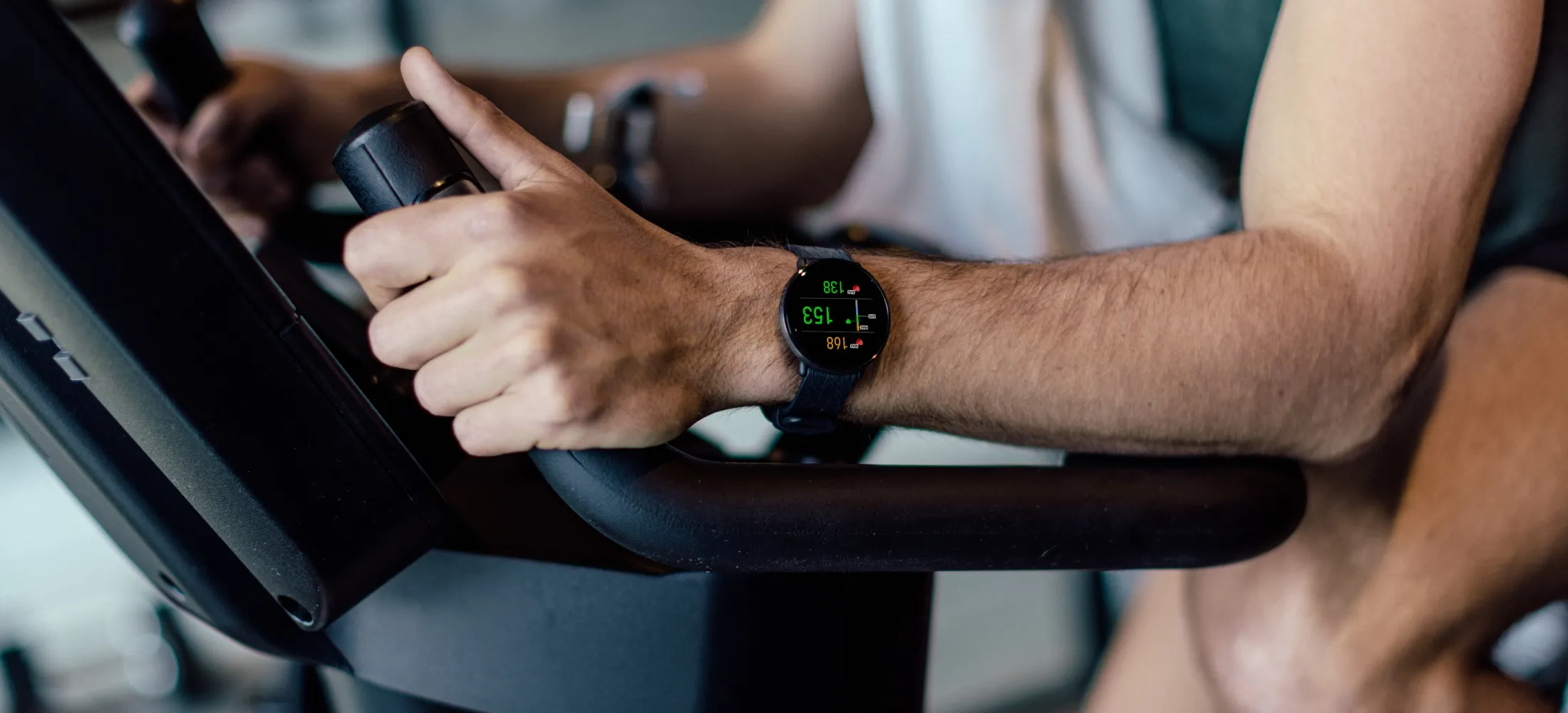
to support one's activity level and bodily functions.
Vagal Nerve Activity: The activity of the primary nerves of the parasympathetic nervous system, which is a strong indicator of improved recovery.
VO2max: The maximum amount of oxygen the body can use during intense exercise. Are you wondering who invented VO2max?
Matter of Heart
Cardiac biomarkers: Indicators that remain elevated for several days after a race, showing ongoing stress on the heart muscle.
Cardiac fatigue: A temporary reduction in the heart's functional capacity due to the extraordinary cardiovascular strain of a marathon.
Cardio load: A measure of the strain placed on your heart and cardiovascular system during a workout. It helps you understand how a workout is affecting your aerobic fitness and is typically measured by heart rate and workout duration.
Cardiac output: The amount of blood the heart pumps with each beat, explaining that endurance training increases it.
Heart rate training: A training method that uses heart rate zones to guide the intensity of a workout. More on the Polar Guide to Heart Rate Training.
Heart Rate Variability (HRV): The variation in time between each heartbeat. It is an indicator of the body's recovery from stress or exercise. Learn more: Polar Guide Heart Rate Variability.
Heart rate zones: Specific ranges of your heart rate that correspond to different levels of exercise intensity.
Maximum Heart Rate (MHR): The highest number of times your heart can beat per minute during maximum physical exertion. It is a key metric used to determine an individual's heart rate zones. Learn here how to estimate your maximum heart rate.
Resting Heart Rate (RHR): The number of times your heart beats per minute while at rest. It's often used as an indicator of cardiovascular fitness.
R-R interval measurements: The time measured between consecutive heartbeats, used to calculate heart rate variability.
Target zone: A specific heart rate range during exercise to achieve a particular training goal, such as cardiovascular improvement or fat burning.
Zone 2: A low-intensity training zone where your heart rate is at a specific percentage of its maximum. It is often used to build endurance.
Zone 3: A moderate-intensity training zone where your heart rate is at a specific percentage of its maximum. It is often used to improve aerobic power and efficiency.
Zone 4: A high-intensity training zone where your heart rate is at a specific percentage of its maximum. It is often used to increase anaerobic fitness and speed.

Strength and Conditioning
Bench-style presses: A chest, shoulder, and triceps exercise where you lie on an elevated natural surface and press a log or rock upwards.
Clean and press: A full-body movement involving lifting a log to your chest in one fluid motion and then pressing it overhead.
Compound Exercise: A movement that works multiple muscle groups at the same time, such as squats, deadlifts, and bench presses.
Concentric Phase: The part of a movement where the muscle shortens and contracts. For example, the lifting phase of a bicep curl.
Eccentric Phase: The part of a movement where the muscle lengthens under tension. For example, the lowering phase of a squat or bicep curl.
Hypertrophy: This refers to the enlargement or growth of muscle tissue. It's the physiological process that leads to an increase in muscle size, often a goal of strength training.
Isolation Exercise: A movement that targets a single muscle group, such as a bicep curl or triceps extension.
Muscle Load: A measure of the strain placed on your muscles and skeletal system during a workout. It reflects the mechanical stress on your muscles and helps you determine if a workout is taxing your muscular system enough to promote growth.
Progressive overload: The principle of gradually increasing the stress on the body during exercise to force it to adapt and grow stronger.
Pull-ups/Chin-ups: An upper body exercise using a high bar to pull your body weight up.
Reps: Short for repetitions. This is one complete motion of an exercise.
Rest Period: The time you spend resting between sets to allow your muscles to recover.
Sets: A group of repetitions performed consecutively, followed by a rest period.
undefined

Polar Verity Sense
Optical Heart Rate Sensor
Polar Verity Sense is an optical heart rate monitor that provides you with maximum freedom of movement and multiple options for viewing and recording your workouts. With Bluetooth®, ANT+, and internal memory, you can connect Polar Verity Sense to a sports watch or app to see your workout in real time, or view your data afterwards.
Polar Sports Tech
ANT+ connectivity: A wireless communication protocol that allows fitness devices to connect to one another.
Bluetooth® connectivity: A wireless communication protocol that allows fitness devices to connect to one another.
Continuous Heart Rate: A feature that tracks your heart rate 24/7, providing data on your resting heart rate and how your heart rate fluctuates throughout the day.
Dual-frequency GPS: A more advanced GPS system that uses two different frequencies to provide more accurate location tracking, especially in challenging environments.
ECG readings: Refers to the electrocardiogram, which measures the electrical signals of the heart.
FitSpark™: A daily training guide that offers workout suggestions based on your recovery, fitness level, and training history.
Functional Threshold Power (FTP): A key metric in cycling used to determine personalized training zones. It is the highest power you can maintain for an hour of cycling.
FuelWise™: A smart assistant that helps you stay energized during long sessions by reminding you to hydrate and take in carbohydrates at optimal times.
Nightly Recharge™: A feature that automatically measures your overnight recovery. It provides insights into how well you've recovered from daily stress and training.
Optical heart rate monitor: A technology that uses light to measure heart rate from the skin. Here's a little history of optical heart rate monitoring.
Orthostatic Test: A test that helps you avoid overtraining by measuring your body's response to standing up. It's used to determine if your body has recovered from your training load.
Running Index: A measure that calculates your running VO2max. This is an estimate of your maximal oxygen uptake, which is a key indicator of aerobic fitness.
Running Power: A tool that measures the external load of a run. It's a metric that represents the work you are doing and can be used to gauge the intensity of your training in real-time.
Serene™ breathing exercise: A guided breathing exercise designed to help you relax and de-stress.
Sleep Plus Stages™: A tool that tracks your sleep stages (light, deep, and REM sleep) and gives you a numerical score to help you understand the quality of your sleep.
Training Load Pro: A feature that helps you understand the strain your training is putting on your body by analyzing three different loads: Cardio Load, Muscle Load, and Perceived Load.
VAM (Vertical Ascent Meter): A metric that shows the rate of ascent in meters per hour, helping to estimate climbing speed.
Wrist-based heart rate: A heart rate monitor that is built into a watch and measures heart rate from the wrist.
Recovery
Active recovery: Intentionally lowering your training intensity and incorporating gentle stretching or light movement to encourage blood flow and healing.
Box Breathing: A breathing technique used to calm the mind and regain focus by inhaling, holding, exhaling, and holding for equal counts.
Cool-down: The period after a workout where you gradually decrease your exercise intensity. This helps to slowly lower your heart rate and prevent blood from pooling in your limbs.
Delayed Onset Muscle Soreness (DOMS): The familiar muscle ache and stiffness that appears 24 to 48 hours after a race, caused by microscopic tears in muscle fibers that trigger an inflammatory response.
Dynamic Stretching: A type of stretching that involves controlled, fluid movements to prepare the body for exercise, as opposed to holding a static stretch.
Foam Rolling: A self-massage technique using a foam cylinder to apply pressure to muscles and break up knots or tightness. It can help improve flexibility and reduce muscle soreness. Fun read: what is foam rolling?
Mobility exercises: A form of exercise designed to improve the range of motion of joints and muscles.
Myofascial Release: A massage technique that applies gentle, sustained pressure to the connective tissue that surrounds your muscles (fascia) to relieve pain and restore motion. Foam rolling is a form of this.
Nervous System Fatigue: A state of reduced efficiency in neural function that can manifest during and after physical exertion.
Prehab work: Exercises that are performed to prevent injuries.
Recovery runs: Easy, short runs done after a hard workout to help the body recover and reduce muscle soreness.
Rest Day: A full day off from structured exercise. Rest days are crucial for allowing your body to repair muscle tissue, replenish energy stores, and prevent overtraining.
Static Stretches: A type of stretching where you hold a position for an extended period (usually 20-30 seconds) to lengthen muscles and improve flexibility. It's best done after a workout when muscles are warm.
Sleep
Circadian rhythm: Your body's internal 24-hour clock that regulates cycles of alertness and sleepiness. It is influenced by light and darkness.
Deep sleep: The most restorative stage of sleep, also known as slow-wave sleep. During this phase, your body releases growth hormones to repair muscle tissue and consolidate memories.
Light sleep: The initial phase of non-REM sleep, which acts as a transition between wakefulness and deeper stages. It is the longest stage of sleep, accounting for about half of your total sleep time.
Non-REM (NREM) sleep: A period of sleep divided into three stages, where brain activity is generally slower. It includes both light sleep and deep sleep.
REM (Rapid Eye Movement) sleep: A stage of sleep characterized by rapid eye movements, increased brain activity, and temporary muscle paralysis. It is the stage where most dreaming occurs and is crucial for learning, memory, and emotional processing.
Sleep: A fundamental part of recovery. During sleep, your body releases hormones that repair muscle tissue and consolidate memories, which is essential for learning new movements and skills.
Sleep cycle: The journey through all the sleep stages. One complete cycle typically lasts between 90 and 110 minutes, and a person usually goes through four to five cycles per night.
Sleep hygiene: A variety of habits and practices that are conducive to sleeping well regularly. Examples include maintaining a consistent sleep schedule and creating a dark, quiet, and cool environment.
Sleep latency: The amount of time it takes to fall asleep.
Sleep stages: The distinct phases you cycle through during sleep. They are typically measured by brainwave activity, eye movement, and muscle tone.
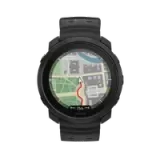 Polar Vantage M3
Polar Vantage M3
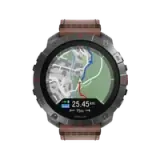 Polar Grit X2 Pro Titan
Polar Grit X2 Pro Titan
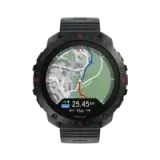 Polar Grit X2 Pro
Polar Grit X2 Pro
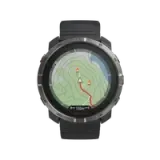 Polar Grit X2
New
Polar Grit X2
New
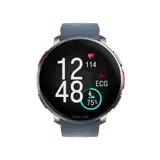 Polar Vantage V3
Polar Vantage V3
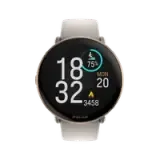 Polar Ignite 3
Polar Ignite 3
 Polar Ignite 3 Braided Yarn
Polar Ignite 3 Braided Yarn
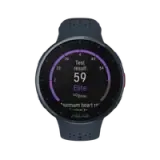 Polar Pacer Pro
Polar Pacer Pro
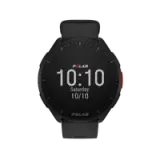 Polar Pacer
Polar Pacer
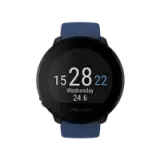 Polar Unite
Grit X Series
Vantage Series
Pacer Series
Ignite Series
Polar Unite
Grit X Series
Vantage Series
Pacer Series
Ignite Series
